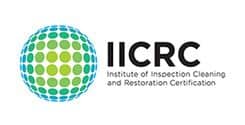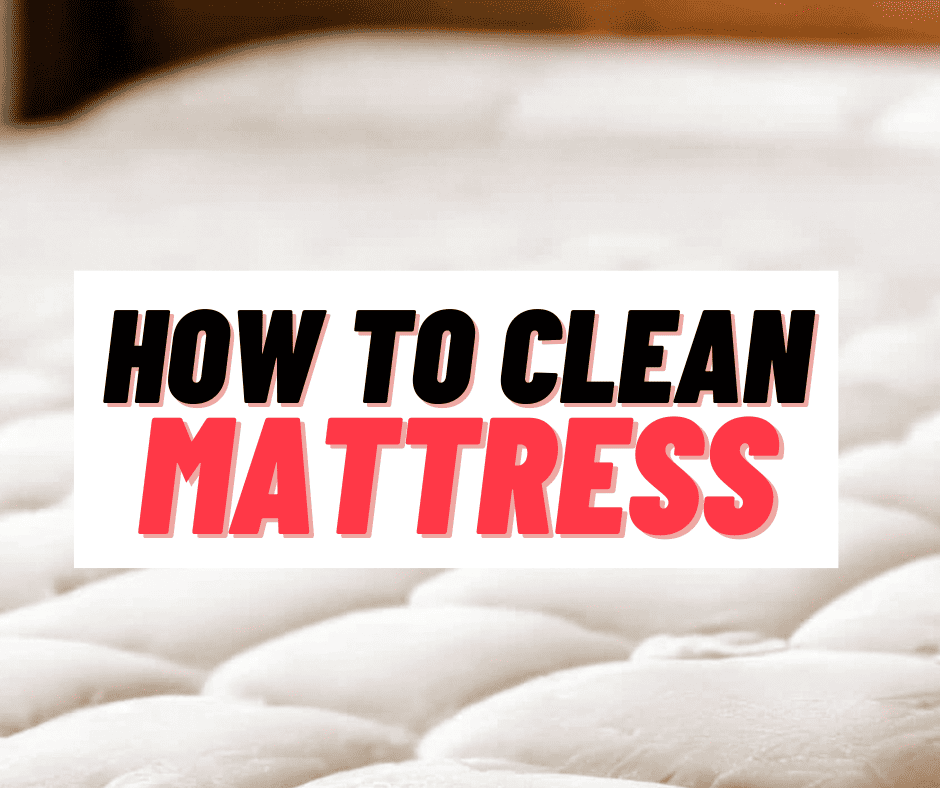
A good night's sleep is essential for maintaining overall health and well-being. One key factor often overlooked in achieving this is the cleanliness of our mattresses. Regular mattress cleaning not only ensures a hygienic sleeping environment but also prevents allergens and dust mites from accumulating. Enter baking soda, an eco-friendly and cost-effective alternative to chemical cleaners that's safe for use on various mattress types.
Baking soda offers several benefits. It effectively neutralises odours, leaving your bed smelling fresh and clean. Its absorbent properties make it perfect for tackling moisture and removing stains without damaging the mattress fabric. To maintain a fresh sleeping surface, experts recommend using this method every few months.
Before diving into the cleaning process, gather necessary supplies such as baking soda, a vacuum cleaner, and essential oils (optional). Proper ventilation in the room is crucial for efficient drying during the process.
To get started with this fantastic cleaning method, follow these simple steps:
While you're at it, don't forget about flipping or rotating your mattress to ensure even wear and tear. This simple step can significantly prolong the life of your bed, providing you with countless nights of comfortable sleep.
If you come across any stubborn stains during the cleaning process, create a paste by mixing equal parts baking soda and water. Apply this concoction directly to the stain, allowing it to sit for 30 minutes before gently scrubbing with a damp cloth. Finish by vacuuming up any residue.
Got a memory foam mattress? No problem! The same method applies; just be extra gentle when vacuuming to avoid damaging the delicate material.
Have you ever noticed that unpleasant smell wafting from your mattress? Baking soda can be your best friend in this situation. It's a natural deodorizer, which means it effectively neutralises odours without the need for harsh chemicals or fragrances. Sprinkling baking soda on your mattress and letting it sit for a few hours will absorb any lingering smells, leaving your bed smelling fresh and clean. This is especially helpful if you're dealing with pet odours or sweat stains that have built up over time.
Cleaning products can be expensive, but did you know that baking soda is an affordable alternative? A box of baking soda costs only a few dollars and can last for multiple cleaning sessions. Comparatively, commercial cleaning products often come with a higher price tag and may not last as long. By using baking soda to clean your mattress, you'll save money while still achieving excellent results.
Many cleaning products contain harsh chemicals that can be harmful to both humans and animals. Thankfully, baking soda is non-toxic, making it safe for use around children and pets. You won't have to worry about exposing your loved ones to dangerous substances when using baking soda to clean your mattress. Plus, its gentle nature won't damage the fabric or materials of your bed.
Accidents happen—maybe you spilled coffee in bed or had a nosebleed during the night. Whatever the case may be, baking soda's mild abrasive properties can help lift and remove stubborn stains from your mattress. Simply make a paste by mixing water with the baking soda, apply it to the stain, let it sit for 30 minutes to an hour, and then gently scrub away with a damp cloth. You'll be amazed at how easily those pesky stains disappear.
Did you know that your mattress can harbour allergens such as dust mites and pet dander? These microscopic critters can cause allergy symptoms like sneezing, itching, and watery eyes. Regularly cleaning your mattress with baking soda can help reduce these allergens, making it easier for you to breathe and sleep comfortably. The fine powder of baking soda helps to break up and remove the allergens from the surface of your mattress.
Investing in a good-quality mattress is essential for a good night's sleep, but maintaining its overall quality is just as important. Keeping your mattress clean and fresh with baking soda can extend its lifespan, ensuring that you get the most out of your investment. A well-maintained mattress not only provides better support for your body but also prevents the growth of mould, mildew, and bacteria that can lead to health issues.
So next time you're thinking about giving your mattress a thorough cleaning, consider reaching for that box of baking soda in your pantry. With its odour-neutralising power, cost-effectiveness, safety, stain-removing abilities, allergen reduction properties, and ability to prolong the lifespan of your bed, it's no wonder why so many people choose this natural solution for their mattress cleaning needs. Give it a try; you might be surprised by how effective it is!
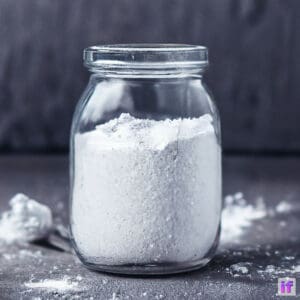
Mixing equal parts of baking soda and white vinegar creates a potent cleaning solution that effectively removes dirt, stains, and bacteria from mattresses. This dynamic duo works wonders on various types of mattresses, providing an eco-friendly alternative to harsh chemical cleaners. The fizzing action produced when these two ingredients combine helps lift stubborn stains and grime from the mattress surface.
To further boost the effectiveness of the baking soda and vinegar solution, consider adding a small amount of hydrogen peroxide. This addition increases its stain-fighting power, making it even more successful in tackling those tough-to-remove spots on your mattress. Hydrogen peroxide is also known for its disinfectant properties, ensuring a thorough clean.
Pouring the baking soda, vinegar, and hydrogen peroxide solution into a spray bottle allows for simple and even distribution across the mattress surface. This method ensures that all areas are adequately covered while preventing any oversaturation or pooling of the cleaning solution. A spray bottle application makes it easier to control the amount used during cleaning.
The combination of baking soda and vinegar is not only great at removing stains but also highly effective at killing bacteria lurking within your mattress. These natural ingredients work together to neutralise odours as well, resulting in a fresher-smelling sleeping environment. Say goodbye to unpleasant smells and hello to a cleaner, healthier bed.
This baking soda and vinegar cleaning method is suitable for various types of mattresses, making it a versatile option for many households. As an added bonus, this natural cleaning process is environmentally friendly and avoids the use of harsh chemicals that can be harmful to both you and the planet. So, not only will your mattress be cleaner and fresher, but you'll also be doing your part in protecting our environment.
A simple yet effective way to deodorise and maintain the freshness of your mattress is by sprinkling baking soda over its entire surface. Pay special attention to areas with strong odours, as the baking soda will work wonders in absorbing those odours and keeping your mattress smelling fresh. Don't be shy with the amount of baking soda you use; a generous layer will ensure maximum odour absorption.
To enhance the deodorising effect of baking soda and add a pleasant scent to your mattress, consider using an essential oil mixture. Combine a few drops of your preferred essential oil, such as lavender or eucalyptus, with water in a spray bottle. Lightly mist the mattress before sprinkling the baking soda on top. The combination of these ingredients will not only neutralise odours but also create a calming atmosphere perfect for relaxation.
Patience is key when it comes to allowing the baking soda and essential oil mixture to do their job. Let it sit on your mattress for at least a few hours, or even overnight if possible. This gives the ingredients ample time to work together to neutralise any lingering odours while providing lasting freshness for your bed.
Once you've allowed enough time for the mixture to sit on your mattress, it's important to remove any remaining traces of baking soda. Using a soft brush or vacuum cleaner attachment, gently clean all sides and corners of the mattress thoroughly. Be sure not to miss any spots; leaving excess baking soda behind can cause discomfort during sleep.
For an extra boost in eliminating odours and ensuring a fresh-smelling mattress, place it in an area with good air circulation and direct sunlight for several hours. The combination of fresh air and sunlight helps break down any lingering odour-causing particles, leaving your mattress smelling clean and inviting.
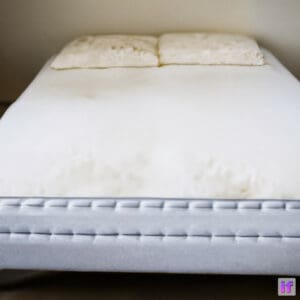
Crafting a homemade stain remover is an effective way to tackle stubborn mattress stains. Combine 1/4 cup of baking soda, 1/4 cup of water, and a few drops of liquid detergent to create a powerful paste. Apply this mixture directly to the stained area, such as coffee or sweat marks. Let it work its magic for an hour before gently scrubbing with an upholstery attachment. The combination of ingredients breaks down the stain, making it easier to lift away from the mattress fabric.
Accidents happen, but removing urine stains from your mattress doesn't have to be difficult. To effectively eliminate these unsightly marks, mix 2 cups of water with 1 cup of white vinegar and a few drops of detergent in a spray bottle. Generously spray the solution onto the urine-stained area and let it sit for several hours. This allows the vinegar to neutralise any lingering odours while breaking down the stain itself.
After allowing ample time for the solution to work, blot the area with a clean cloth to remove excess moisture. Next, sprinkle baking soda over the stain and let it sit for an hour before vacuuming up any residue using your bed selector tool's upholstery attachment.
Choosing the right bed selector tools can make all the difference in achieving optimal cleaning results when removing stubborn stains from your mattress fabric. Select an appropriate upholstery attachment specifically designed for use on mattresses; this ensures thorough removal of both baking soda and any remaining stain residue without causing damage to your mattress materials.
Sweat stains can be particularly tricky due to their yellowish hue and tendency to set into fabrics over time. However, there's no need to fret! Mix equal parts water and lemon juice in a spray bottle as a natural solution that's gentle on your mattress fabric. Generously spray this mixture onto the sweat-stained area and let it sit for 30 minutes. The acidity of the lemon juice helps break down the proteins in the sweat, making it easier to lift away from the fabric.
After allowing time for the lemon juice solution to work, blot the area with a clean cloth to remove any excess moisture. To finish off, sprinkle baking soda over the stain and let it sit for an hour before vacuuming up any residue using your bed selector tool's upholstery attachment.
A healthy sleeping environment is essential for a good night's rest. Cleaning your mattress every six months helps remove accumulated dust, allergens, and bacteria that can cause health issues. A clean mattress not only promotes better sleep but also keeps you feeling refreshed and energised throughout the day.
Regular cleaning is crucial for those who suffer from allergies or asthma, as it reduces the presence of allergens in the bedroom. Moreover, it prevents the growth of mould and mildew, which can lead to respiratory problems. By maintaining a clean mattress, you're investing in your overall well-being and ensuring a comfortable sleep experience.
To extend the life of your mattress and ensure even wear, flip and rotate it every three months. This practise prevents sagging or indentations that can affect your comfort while sleeping. Flipping involves turning the mattress over so that the side you were sleeping on is now facing down, while rotating means turning it 180 degrees horizontally.
By doing this regularly, you distribute pressure evenly across the surface of the mattress. As a result, it maintains its shape for longer periods and provides consistent support to your body during sleep. This simple yet effective practise ultimately leads to better sleep quality.
Dust mites, pet dander, and other debris accumulate on mattresses over time. To effectively remove these particles from the surface, vacuum your mattress regularly using a 460-px-wide upholstery attachment specifically designed for this purpose.
Start by removing all bedding materials like sheets, pillows, and blankets before vacuuming both sides of the mattress thoroughly. Pay close attention to seams and edges, where dirt tends to accumulate more easily. Vacuuming not only removes allergens but also improves the air quality in your bedroom, making it an essential part of maintaining a clean sleeping environment.
Accidents happen; spills or stains may occur on mattresses from time to time. To prevent the stain from setting in, address it promptly with a mixture of baking soda and water. Gently dab the affected area using a clean cloth or sponge, being careful not to rub or scrub, as this can cause the stain to spread.
For tougher stains, you may need to repeat the process several times until they're completely removed. Remember to always use gentle cleaning methods that won't damage your mattress or void its warranty.
To neutralise odours and maintain freshness, sprinkle baking soda on your mattress once a month. Allow it to sit for at least an hour before vacuuming it up; this gives the baking soda enough time to absorb any lingering smells.
Baking soda is an excellent natural deodorizer that effectively eliminates odour-causing bacteria without introducing harsh chemicals into your sleeping environment. By incorporating this simple step into your regular cleaning routine, you'll keep your mattress smelling fresh and inviting all year.
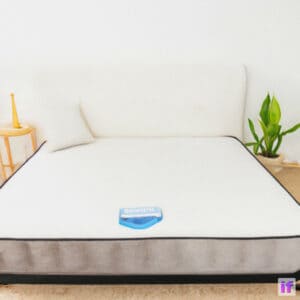
One crucial tip to keep your mattress clean is to vacuum it regularly. This simple action helps remove dust, dirt, and allergens from the surface of your mattress, ensuring a healthier sleep environment. Make a habit of vacuuming your mattress at least once a month, or more frequently if you suffer from allergies. By doing so, you'll not only improve the cleanliness of your bed but also promote better overall health.
Utilising mattress protectors or encasements is another effective way to maintain cleanliness. These covers prevent spills, stains, and allergens from penetrating the mattress, making it easier to keep clean over time. When choosing a protector, look for one that's waterproof and hypoallergenic to provide maximum protection against liquids and allergens. Remember to wash the cover regularly according to the manufacturer's instructions.
When dealing with spills or stains on your mattress, using a clean towel is key. Gently blot the area with the towel instead of rubbing or scrubbing; this prevents damage to the fabric and stops the stain from spreading further. For stubborn stains like blood or urine, try applying a mixture of hydrogen peroxide and dish soap before blotting with a clean towel. Always test any cleaning solution on an inconspicuous part of your mattress first to ensure it doesn't cause discoloration.
To ensure even wear on your mattress and prevent sagging over time, rotate it 180 degrees every three months. If you have a flippable mattress (one that can be used on both sides), flip it over as well during rotation. This practise distributes body weight evenly across the surface of your bed, prolonging its lifespan while maintaining comfort levels.
Periodically airing out your mattress is another effective tip for maintaining cleanliness. Remove your bed linens and allow fresh air to circulate around the mattress for several hours. This helps eliminate odours, moisture, and any lingering allergens that vacuuming may have missed. For best results, try doing this on a sunny day with low humidity.
While using baking soda is a popular method for cleaning mattresses, there are more ways to achieve a deep clean that extends the life of your bed. Steam cleaning can be an excellent option for removing stubborn stains and killing bacteria without using harsh chemicals. Alternatively, consider hiring professional services to give your mattress a thorough deep clean every six months or so.
By following these tips and tricks, you'll maintain a cleaner mattress that promotes better sleep quality and overall health. Remember that consistency is key; establish a routine of regular vacuuming, rotating, airing out, and deep cleaning to keep your bed in top condition for years to come.
Baking soda truly works wonders. This budget-friendly, non-toxic solution effectively removes dirt, odours, and stains from your sleeping surface. You'll be amazed by the results after using this simple yet powerful household item.
Combining baking soda and vinegar creates a potent cleaning agent that tackles even the toughest of stains. This dynamic duo breaks down grime and lifts it away from your mattress. Just remember to use caution when applying this mixture to avoid damaging delicate fabrics.
Deodorising your mattress is a breeze with baking soda. Sprinkle a generous amount onto the surface, let it sit for several hours or overnight, and then vacuum it up. Voila! Your mattress will smell fresh and clean once again.
Vacuuming regularly helps maintain a clean mattress by removing dust mites, allergens, and debris. Don't forget to spot-clean any spills or stains as soon as possible to prevent them from setting in.
When dealing with stubborn stains like urine or sweat, patience is key. Apply baking soda directly to the affected area and let it work its magic before gently scrubbing away the residue with a damp cloth.
Flipping your mattress every few months ensures even wear and tear while also promoting better hygiene. It's essential to keep track of how often you're cleaning your mattress; aim for at least twice a year for optimal results.
Maintaining a clean mattress doesn't have to be difficult or time-consuming. By incorporating these tips into your routine, you'll ensure that you're getting a good night's sleep on a fresh and hygienic surface.
So there you have it: cleaning your mattress with baking soda is not only effective but also safe for both you and the environment. Give it a try next time you need to refresh your sleeping space—you won't be disappointed!
Remember that consistency is crucial; you'll extend the life of your mattress and improve your overall sleep quality.
Now that you're equipped with this knowledge, go forth and conquer those pesky stains and odours! Your mattress will thank you for it, and so will your body as you drift off into a blissful slumber each night.
Don't be afraid to get creative with your cleaning techniques; sometimes experimenting with different approaches can yield fantastic results. Just always remember to test any new method on an inconspicuous area first to avoid potential damage.
In the end, taking care of your mattress is an investment in both your health and well-being. A clean sleeping environment promotes better rest, which in turn leads to increased energy levels, improved mood, and enhanced overall quality of life.
So next time you notice a funky smell or unsightly stain on your mattress, don't hesitate to reach for that trusty box of baking soda. With just a little bit of elbow grease and some patience, you'll have a fresh and inviting place to lay your head at night.
Happy cleaning!

Harry Virk is the director of CleaningPro Auckland. He has years of experience in the cleaning industry and his company is expert at providing exceptional cleaning services in Auckland. He has a passion for helping people and making sure that their homes are clean, tidy, and ready for visitors.
